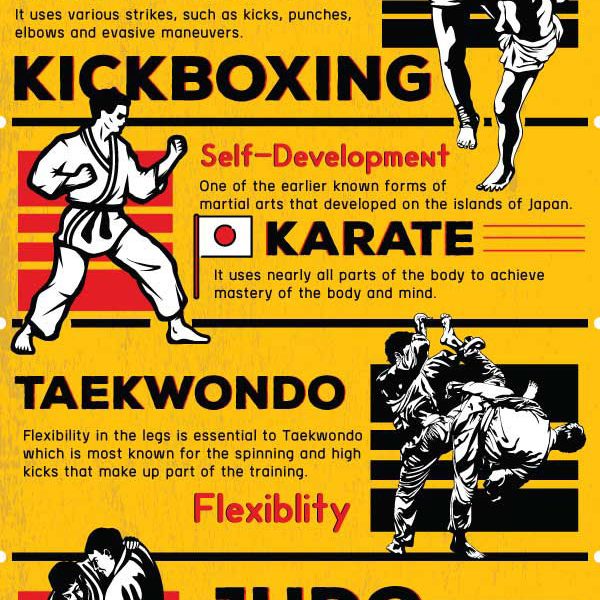Discovering Various Designs Of Fighting Style: From Karate
Discovering Various Designs Of Fighting Style: From Karate
Blog Article
Personnel Author-Lee Danielsen
Study the globe of martial arts designs, from the powerful strikes of Karate to the ground fighting of Jiu-Jitsu. Each style discloses its distinct beginnings and strategies. Discover exactly how Martial arts's roots in Okinawa mix with Chinese martial arts, while Jiu-Jitsu's beginnings hinge on Japan. Whether you look for effective strikes, throws, dexterity, or ground fighting, each design provides something unique. Discover the self-control, flexibility, and imagination each style involves. The globe of martial arts is huge, with more to check out.
Origins and Advancement
In mapping the beginnings of numerous martial arts styles, you need to look into their origins and observe just how they've progressed gradually. Fighting style have varied origins, with each style reflecting the culture and history of its birth place. For example, Martial arts originated in Okinawa, developed from native combating methods affected by Chinese martial arts. On the other hand, Jiu-Jitsu traces its origins back to Japan, concentrating on grappling and ground fighting techniques. Over the centuries, these designs have actually spread worldwide, adapting to different atmospheres and influences.
The development of martial arts is an interesting journey that highlights the blend of custom and innovation. As these designs took a trip across continents, they absorbed brand-new techniques and approaches, forming them into the diverse range of martial arts we see today. With globalization and innovation, martial arts have not only maintained their typical significance yet also developed to match contemporary demands. With this evolution, martial arts continue to influence specialists worldwide, embodying discipline, respect, and self-improvement.
Key Techniques and Concepts
Discovering the significance of martial arts designs includes understanding the key techniques and principles that underpin their technique and approach.
In https://rylannsxei.blogdun.com/31734113/a-relative-analysis-of-martial-arts-and-self-defense-recognizing-the-essential-distinctions , the emphasis gets on powerful strikes utilizing the hands, joints, knees, and feet. The essential concept is to produce maximum force with accuracy and efficiency.
Judo highlights throws, pins, and joint locks, created to use a challenger's force against them. The principle of optimum performance with minimal initiative guides Judoka.
Taekwondo positions a solid emphasis on kicking techniques, going for speed and dexterity. The tenets of courtesy, stability, willpower, self-control, and indomitable spirit are essential in Taekwondo.
https://trevorxjtfp.ambien-blog.com/37447542/discover-why-fighting-styles-is-the-perfect-sporting-activity-for-youngsters-boost-self-confidence-self-control-and-protection-skills-unleash-their-prospective-today -Jitsu revolves around grappling, entries, and ground fighting. The principle of using technique and take advantage of to get over larger challengers is main to Brazilian Jiu-Jitsu.
Each martial art has its one-of-a-kind methods and concepts, but all share the usual objective of self-improvement, self-control, and respect. Comprehending these core components is vital for mastering any kind of martial art style.
Training Techniques and Approaches
Comprehending the varied training approaches and viewpoints throughout different martial arts designs is necessary for honing your abilities efficiently. Each martial art has its one-of-a-kind strategy to training, reflecting its background, principles, and objectives.
Karate, as an example, concentrates on establishing striking strategies through kata technique and sparring drills. In contrast, Jiu-Jitsu highlights ground battling and entry holds, commonly incorporating real-time moving sessions to imitate real fight scenarios.
Educating https://olympics.com/en/news/what-is-mallakhamb-rules-history-origin-india can vary from extreme physical conditioning in Muay Thai to the complex concentrate on leverage and technique in Aikido. Some styles focus on self-control and regard, while others stress flexibility and creative thinking in fight circumstances. By checking out these various approaches, you can broaden your understanding of martial arts all at once and find the approaches that resonate most with your objectives and values.
Eventually, delving into the training techniques and philosophies of different martial arts styles permits you to cultivate an all-around skill set, enrich your martial arts journey, and grow both physically and psychologically.
Conclusion
So there you have it, after exploring different martial arts styles from martial arts to jiu-jitsu, you may think you have actually found the excellent suitable for your fighting design.
Yet keep in mind, in the world of martial arts, the only constant is modification. Simply when you assume you have actually understood a strategy, there's always room for enhancement.
Maintain training, keep discovering, and that knows, you might simply surprise yourself with what you can accomplish.
